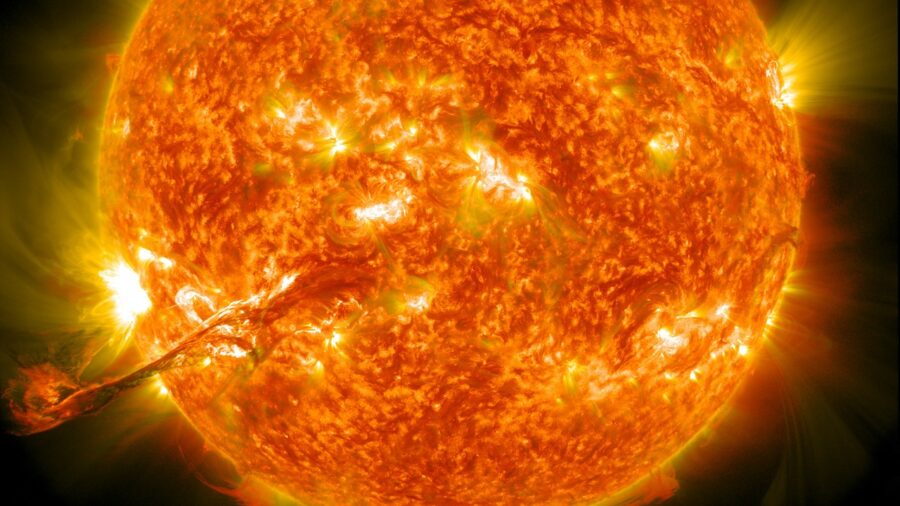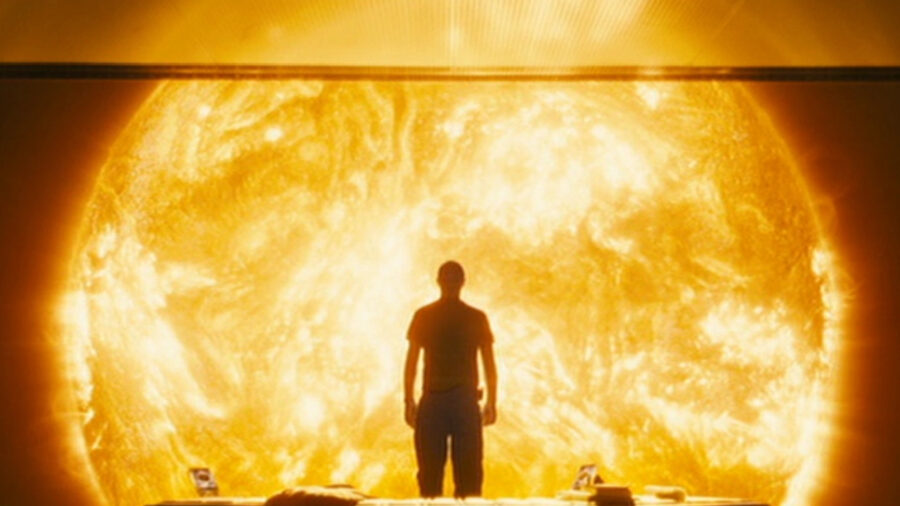Earth’s Magnetic Field Knocked Off Balance By The Sun And It Gets Worse

Our sun is in the solar maximum of the solar cycle right now, and the crazy storms from this cycle have had some interesting effects on Earth. Last year, a team of researchers saw a coronal mass ejection (CME) disrupt the magnetic field of Earth for two hours. A coronal mass ejection is a burst of solar radiation.
Last April’s CME

This particular coronal mass ejection from the Sun occurred on April 24, 2023, and it allowed the research team to get some more insight into how sub-Alfvenic plasma winds impact Earth and other planetary bodies.
Alfven speed measures the speed magnetic waves move through plasma, and CMEs typically move faster than Alfven speed when they occur. But the event last year saw electron and ion energy fluxes moving faster than Alfven speed, leading to Earth’s bow shock, or a shockwave that forms around our planet when a CME happens, to completely disappear.
Brief Connection To The Sun

When the Sun’s CME caused Earth’s bow shock to vanish, our magnetosphere was exposed to cold CME plasma and the Sun’s magnetic field. Interestingly, this caused our magnetosphere to enter a sort of wing configuration, which momentarily connected our planet to the Sun magnetically.
These are called Alfven wings and they allow plasma to quickly go back and forth between the Sun and Earth.
Coronal mass ejections may sound similar to the solar flares the Sun creates which can wreak havoc with our technologies on Earth thanks to geomagnetic storms, but they’re two different kinds of events.
Solar flares are huge flashes of light that tend to travel faster than CMEs, and their effects usually aren’t as dramatic. CMEs launch a cloud of magnetized particles into space, which can sometimes hit Earth and cause extremely unique events like the one in April of 2023.
The Solar Cycle

This likely won’t be the last unique event that we’ll observe between the Sun and the Earth in the coming months. The solar cycle is a roughly 11-year cycle that peaks when the largest number of sunspots appear and solar activity is at its highest.
This cycle’s solar maximum is estimated to be from July 2024 to January 2025, so there are still quite a few months left before the Sun calms down for a bit.
Unexpected Sky Events

We won’t know for sure if this is the solar maximum until researchers can confirm the data and see that the Sun’s activity was highest during this period, but it seems likely based on events like the Earth’s magnetosphere getting temporarily wiped out.
The increase in solar storms also means that we see more issues with satellite communications and power grids disrupted as the Sun does its thing, but it has the added benefit of giving us beautiful and powerful auroras. Even people in areas who don’t normally get auroras have been seeing them in the last year, so the Sun is clearly more active than usual.
More News To Come

It’ll be interesting to see what other effects the Sun’s solar maximum has on the Earth. In any case, it’s good that we’re able to observe space weather to a finer degree, as predicting these storms can help with warning about potential satellite and power issues. In the meantime, make sure to chase those auroras while you can.
Source: AGU












